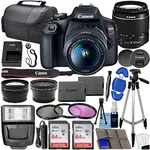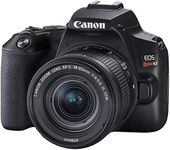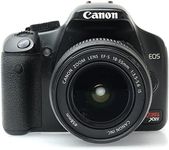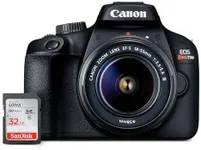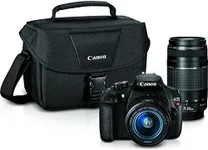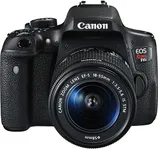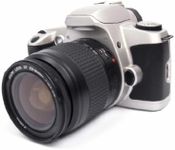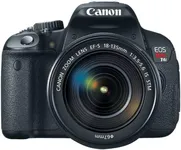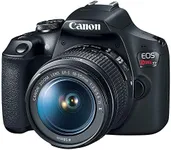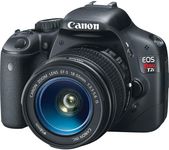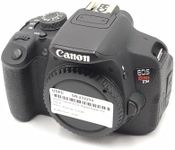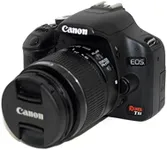Buying Guide for the Best Canon Rebel Cameras
When choosing a Canon Rebel camera, it's important to consider your specific needs and how you plan to use the camera. Canon Rebel cameras are known for their user-friendly interface and high-quality images, making them a great choice for both beginners and more experienced photographers. To make the best choice, you should understand the key specifications and how they align with your photography goals.MegapixelsMegapixels refer to the resolution of the camera's sensor, which determines the detail and clarity of your photos. Higher megapixels mean more detail, which is important if you plan to print large photos or crop images without losing quality. For general use and sharing photos online, a camera with 18-24 megapixels is usually sufficient. If you need more detail for professional work or large prints, consider a camera with 24-30 megapixels.
ISO RangeThe ISO range indicates the camera's sensitivity to light. A wider ISO range allows you to shoot in various lighting conditions, from bright sunlight to low-light environments. For everyday photography, an ISO range of 100-6400 is typically adequate. If you often shoot in low light or need more flexibility, look for a camera with an extended ISO range, such as 100-25600 or higher.
Autofocus SystemThe autofocus system determines how quickly and accurately the camera can focus on a subject. This is crucial for capturing sharp images, especially in action or low-light situations. Basic models may have 9 autofocus points, which is sufficient for general photography. For more advanced needs, such as sports or wildlife photography, look for a camera with 45 or more autofocus points for better precision and speed.
Continuous Shooting SpeedContinuous shooting speed, measured in frames per second (fps), indicates how many photos the camera can take in a burst. This is important for capturing fast-moving subjects, such as in sports or wildlife photography. For casual use, 3-5 fps is usually enough. If you need to capture rapid sequences, consider a camera with 6-10 fps or higher.
Video CapabilitiesIf you plan to shoot videos, consider the camera's video capabilities. Look for features like Full HD (1080p) or 4K resolution for high-quality video. Additionally, check for frame rates (e.g., 30fps, 60fps) and other features like microphone input and image stabilization. For casual video recording, Full HD at 30fps is sufficient. For more professional video work, 4K resolution and higher frame rates are preferable.
Screen TypeThe type of screen on the camera can affect your shooting experience. Some cameras have a fixed screen, while others have a tilting or fully articulating screen. A tilting or articulating screen is useful for shooting at various angles and for taking selfies or vlogging. If you often shoot from different perspectives or need to see yourself while recording, opt for a camera with a flexible screen.
ConnectivityConnectivity options, such as Wi-Fi, Bluetooth, and NFC, allow you to easily transfer photos and videos to other devices or share them online. This is convenient for quick sharing and backup. If you frequently share your work on social media or need to transfer files without a computer, look for a camera with built-in Wi-Fi or Bluetooth.
Battery LifeBattery life is an important consideration, especially if you plan to use the camera for extended periods or in situations where recharging is not possible. Battery life is usually measured in the number of shots per charge. For general use, a battery life of 500-800 shots is adequate. If you need longer battery life for events or travel, look for a camera with 800 shots or more per charge.
